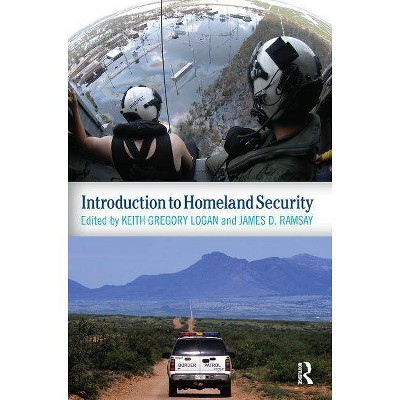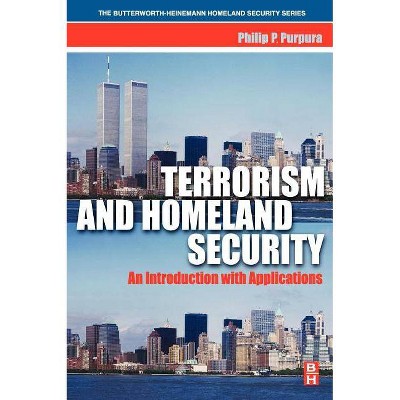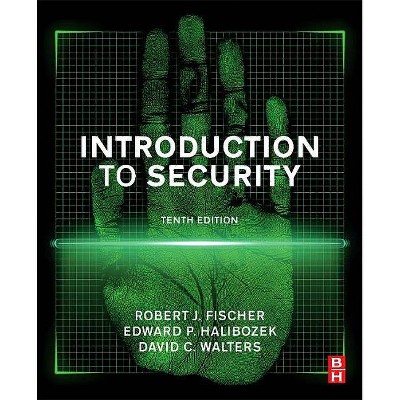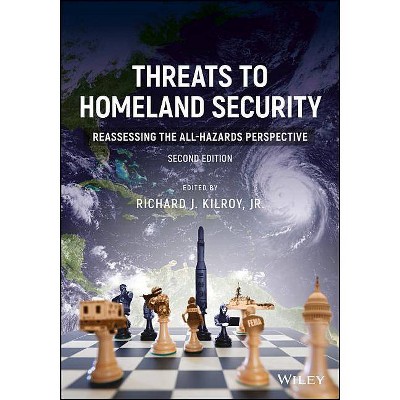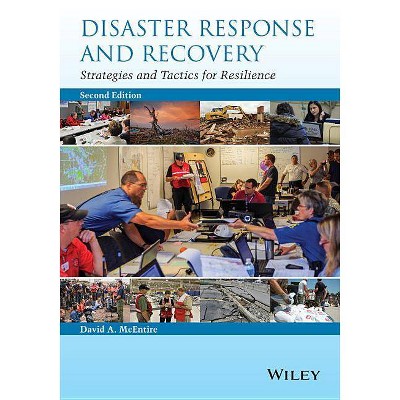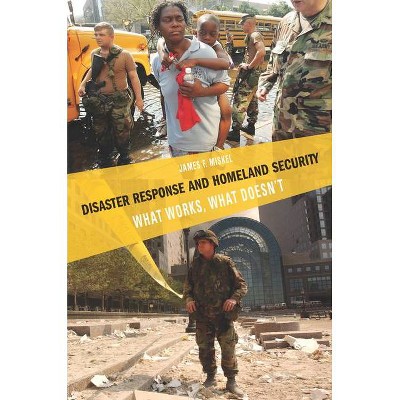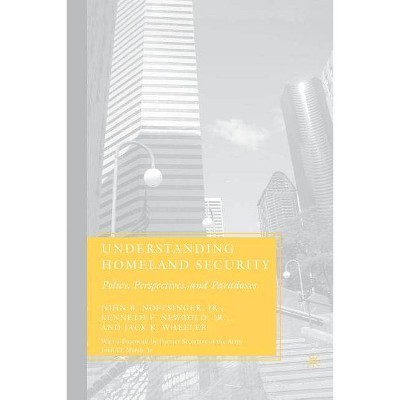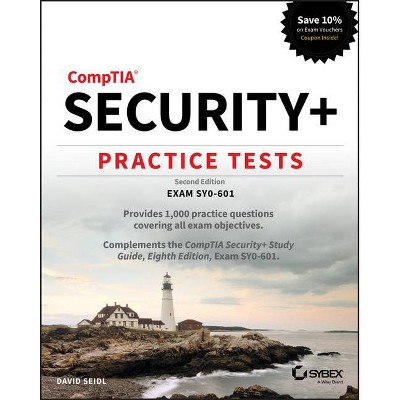Introduction to Homeland Security - 2nd Edition by David A McEntire (Paperback)
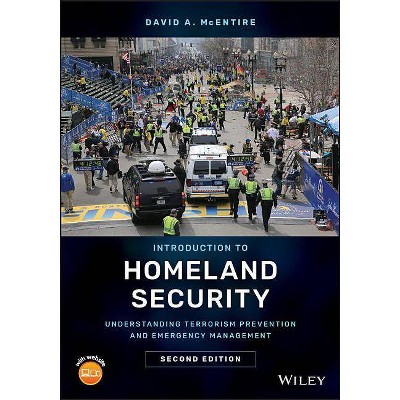
Similar Products
Products of same category from the store
AllProduct info
<p/><br></br><p><b> About the Book </b></p></br></br>"Covers the four traditional phases of emergency management, along with a focus on terrorism prevention and protection. - Contains new content covering recent domestic and international terrorist attacks including the Boston bombing and Paris attacks. - Includes a strong "practitioner" approach and draws upon a solid foundation of academic literature in the field, making it equally attractive to practicing emergency managers and students in a university setting. - Discusses the roles and responsibilities of government agencies, non-government organizations and individual citizens. - The preferred resource for educators of emergency management and homeland security at all levels. Market description The book is intended for students in homeland security and emergency management programs as well as practitioners in the field (intelligence officers, military forces, homeland security employees, public health and medical workers, emergency planners, emergency management coordinators, risk managers, business continuity specialists, public administrators, etc.). It may also be applicable to anyone with an interest in terrorism and disasters or anyone with a responsibility to respond and recover to such events"--<p/><br></br><p><b> Book Synopsis </b></p></br></br><p><b>Introduces readers to the world of homeland security and provides them with up-to-date information on recent attacks, new terrorist threats, visible terrorist organizations, current dilemmas, updated research, and best practices</b></p> <p>This book provides comprehensive coverage of issues relating to terrorism, terrorist behavior, homeland security policies, and emergency management. It offers a foundation that spans the readily apparent chasm between the homeland security and disaster communities, and covers the stages of emergency management with a focus on terrorism prevention and response. Based on both the academic literature and practical understanding, the book includes research findings, covering theory and principles as well as their application.</p> <p><i>Introduction to Homeland Security: Understanding Terrorism</i> <i>Prevention and Emergency Management, Second Edition </i>teaches how to define homeland security, understand how it changed after 9/11, and explore its relationship with emergency management; recognize the causes of terrorism and what prompts people to engage in terrorist attacks; assess the trade-offs between security and rights, and understand how terrorism exploits the tension between these two priorities; work to prevent terrorist attacks through intelligence gathering, by promoting laws that prohibit terrorism, and by protecting borders and various sectors of society; prepare for a terrorist attack by creating an advisory council, passing ordinances, acquiring monetary resources, and establishing an EOC; effectively respond to a terrorist attack through the many functions involved, including the protection of first responders and the decontamination of the victims; recover from a terrorist attack through both short-term and long-term measures; anticipate the current challenges faced in homeland security; and comprehend the various types of attacks that might take place in the future. The second edition: </p> <ul> <li>Covers the four traditional phases of emergency response, with a focus on terrorism prevention and infrastructure protection</li> <li>Includes new content such as recent domestic and international terrorist attacks including the attacks in Paris and Boston</li> <li>Has a strong practitioner approach and draws upon a solid foundation of academic literature in the field</li> <li>Discusses the roles and responsibilities of government agencies, non-government organizations, and individual citizens</li> </ul> <p><i>Introduction to Homeland Security</i> is an excellent book for all scholars, students, and practitioners interested or involved in homeland security and emergency management.</p><p/><br></br><p><b> From the Back Cover </b></p></br></br><p><b>INTRODUCES READERS TO THE WORLD OF HOMELAND SECURITY AND PROVIDES THEM WITH UP-TO-DATE INFORMATION ON RECENT ATTACKS, NEW TERRORIST THREATS, VISIBLE TERRORIST ORGANIZATIONS, CURRENT DILEMMAS, UPDATED RESEARCH, AND BEST PRACTICES</b> <p>This book provides comprehensive coverage of issues relating to terrorism, terrorist behavior, homeland security policies, and emergency management. It offers a foundation that spans the chasm between the homeland security and disaster communities, and covers the stages of emergency management with a focus on terrorism prevention and response. Based on both the academic literature and practical understanding, the book includes research findings, covering theory and principles as well as their application. <p><i>Introduction to Homeland Security: Understanding Terrorism</i> <i>Prevention and Emergency Management, Second Edition, </i>defines homeland security, explores how it changed after 9/11, and clarifies its relationship with emergency management. The book also identifies the causes of terrorism and what prompts people to engage in terrorist attacks; assesses the trade-offs between security and rights; and recognizes how terrorism exploits the tension between these two priorities. Chapters discuss how to prevent terrorist attacks through intelligence gathering, by promoting laws that prohibit terrorism, and by protecting borders and various sectors of society. Other topics include preparing for terrorist attacks by creating an advisory council, passing ordinances, acquiring monetary resources, and establishing an EOC. The book also notes how to effectively respond to a terrorist attack through the protection of first responders and the decontamination of the victims; recover from a terrorist attack through both short-term and long-term measures; anticipate the current challenges faced in homeland security; and comprehend the various types of attacks that might take place in the future. <p><b>The second edition: </b> <ul> <li>Covers the four traditional phases of emergency response, with a focus border control and infrastructure protection</li> <li>Includes new content about recent domestic and international terrorist attacks as well as weapons of mass destruction</li> <li>Discusses the roles and responsibilities of government agencies, non-government organizations, and individual citizens</li> <li>Has a strong "practitioner" approach and draws upon a solid foundation of academic literature in the field</li> </ul> <p><i>Introduction to Homeland Security</i> is an excellent book for all scholars, students, and practitioners interested or involved in homeland security and emergency management.<p/><br></br><p><b> About the Author </b></p></br></br><p><b>DAVID A. McENTIRE, PHD, </b> is the Dean of the College of Health and Public Service at Utah Valley University in Orem, Utah. He is responsible for the oversight of numerous undergraduate and graduate programs in the areas of emergency services, homeland security, national security, public service, aviation and health care. He has received several grants--funded by the Natural Hazards Center, the National Science Foundation, and other sources-- that allowed him to conduct research in Peru, the Dominican Republic, Texas, New York, California, and Haiti.
Price History
Cheapest price in the interval: 77.99 on October 27, 2021
Most expensive price in the interval: 77.99 on November 8, 2021
Price Archive shows prices from various stores, lets you see history and find the cheapest. There is no actual sale on the website. For all support, inquiry and suggestion messages communication@pricearchive.us
